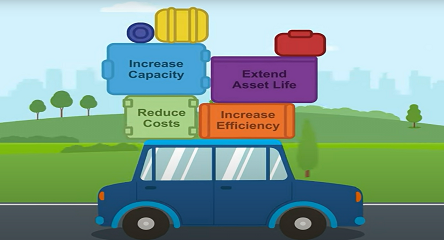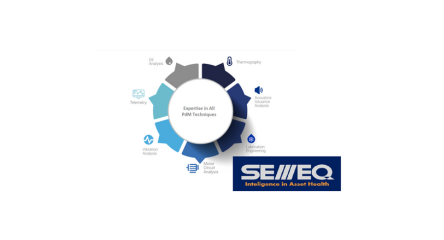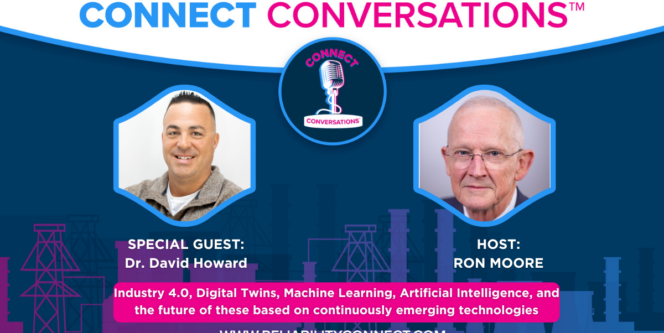The Building blocks for digital transformation
The buzz surrounding digital transformation and Industry 4.0 is reaching new heights, leading to the assumption that asset-intensive organizations are on board and the success of these initiatives is guaranteed. However, the reality is more complex. The idea of intelligent, self-optimizing digital solutions for manufacturing and maintenance that simplify decision-making, enhance performance, increase uptime, and reduce costs is undoubtedly attractive. But the prospect of transformative change can be overwhelming. Executives and department heads face a multifaceted cost-benefit analysis that considers return on investment, competitive advantage, technological and cultural changes, and implementation complexities. Front-line personnel also have concerns about skills adequacy, job security, and loss of control. While early adopters have encountered obstacles along the way, proper preparation can help avoid them. Let’s explore the potential of Industry 4.0, its slow adoption rate, its connection to asset management, and present some building blocks for a successful digital transformation.
Industry 4.0 encompasses digital transformation, digitalization, and smart manufacturing, each contributing to the revolution in its unique ways. It merges human and machine capabilities through real-time digital information, connected systems, and intelligent technologies to drive transformative change throughout organizations. Unlike previous industrial revolutions, Industry 4.0 leverages disruptive innovations like cloud computing, the industrial internet of things, big data analytics, artificial intelligence, robotics, and virtual reality. The appeal of Industry 4.0 is universal, attracting manufacturers, energy and utility operators, and service providers alike. It offers improved agility, efficiency, financial performance, skills gap solutions, and enhanced customer experiences, breaking down information silos across various functions and ensuring competitiveness.
Despite its potential benefits, many companies are still in the early stages of adopting Industry 4.0. Several factors contribute to this slow progress. Some manufacturers are still searching for the best solution set, while others find it challenging to implement digital solutions across their operations. Additionally, Industry 4.0 initiatives compete with existing practices in companies lacking lean manufacturing and operational excellence standards. To catch up, manufacturers must prioritize digital readiness enablers such as skills, leadership, and governance. Digital capabilities require skilled personnel, leaders trained in analytics-driven decision-making, and support from top-level governance. Studies show that early adopters of Industry 4.0 outperform their less digitally advanced counterparts, highlighting the urgency for manufacturers to scale up their efforts.
The Readiness Steps to Accelerate Industry 4.0 Success
Establishing the required building blocks will make transforming your organization easier. Readiness begins with stakeholder analysis followed by smart preparation of your data, processes, people, projects, technology, and reporting. The chosen enabling technologies will determine what specific groundwork is required.
1. Stakeholder preparation and analysis comes first so that your organization understands the needs and expectations of stakeholders. The specifics are spelled out in ISO 550001 Section 4.2: The organization shall determine:
• the stakeholders that are relevant to the asset management system;
• the requirements and expectations of these stakeholders with respect to asset management;
• the criteria for asset management decision making;
• the stakeholder requirements for recording financial and non-financial information relevant to asset management, and for reporting on it both internally and externally.
2. Data preparation is fundamental to digitalization and transformative change. Incomplete, uncleansed, or incorrect data pulled into AI/ML and analytics will not produce intelligent results. The adage “garbage in, garbage out” still holds true. Ensuring data quality and integrity requires assessing relevant databases for completeness and accuracy and establishing a plan and schedule for improvements. Assets, asset hierarchies, work orders, inventory, bills of materials, etc., may need work. “We’ve seen plants where 50 percent of their assets are not even in their asset register. It shows they don’t truly have a grasp of what their equipment is, let alone the manufacturer number, model number, and all those things you need for real analytics,” says Wheeler. © Life Cycle Engineering, Inc | www.LCE.com 8 Starting with data as clean as possible will accelerate the value of the intelligence produced and ML will ensure further improvements over time.
3. Process preparation covers any standard work process relevant to the Industry 4.0 initiative being implemented. Asset management, work management, materials management, reliability engineering, production processes, or a combination of these or other business processes may require assessment. For example, asset and work management processes that are based solely on OEM recommendations are not nearly as timely and effective as having a deeper understanding of the component. When it fails, will it take out production by 50, 100, or some other percent? What is the relative criticality impact? Based on its criticality, what level of failure mode and effects analysis (FMEA) is needed? What should be the triggers or alert limits? Then, an Asset Management Plan can be developed that serves as the playbook for that asset or set of assets across their life cycle, and includes the maintenance strategy, operations strategy, and a capital strategy needed to ensure the system performs as expected. In reliability engineering, knowing what is critical to the quality of the product, what variables matter to the process, and which parameters should be monitored is essential intelligence for the digital systems. For predictive maintenance, knowing that a certain temperature is critical to quality and variations are a predictor of failure can lead to installing a condition monitoring sensor to measure and trend the parameter. The real-time readings, failure modes, threshold limits, who to notify when a threshold is crossed, and what to do about it, together enable corrective actions before failure occurs. With AI/ML analyzing the patterns and maintenance activity over time, the recommendations prescribed will be continuously fine-tuned.
Click here to deep dive further into the 7 Readiness Steps to Accelerate Industry 4.0 Success.





